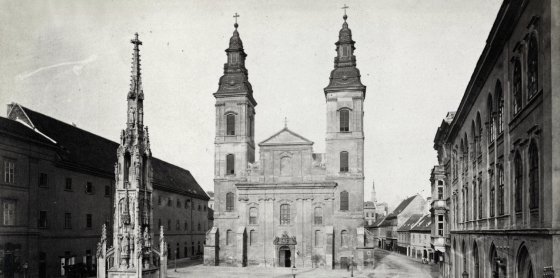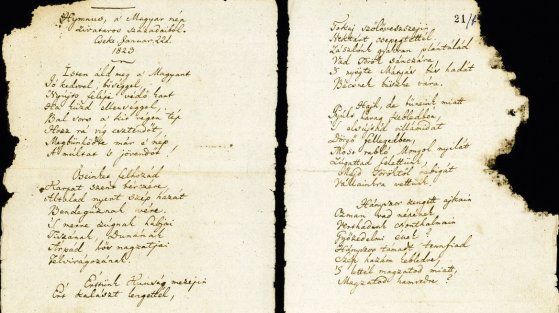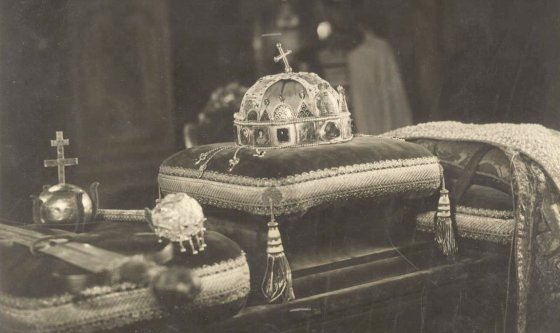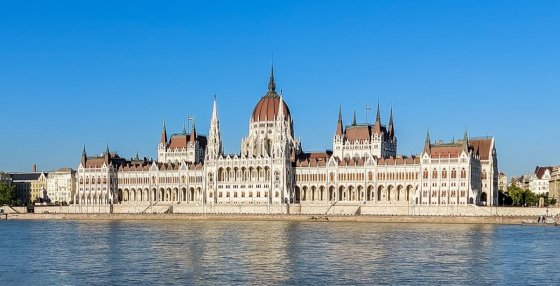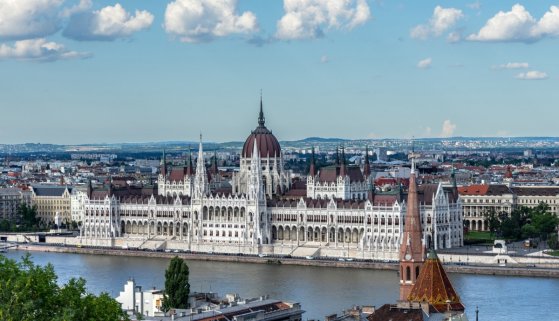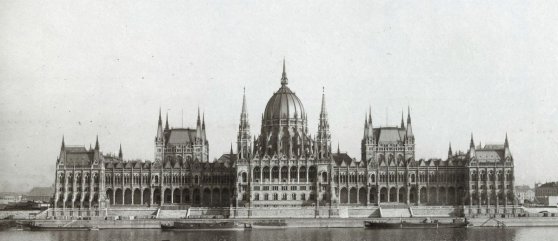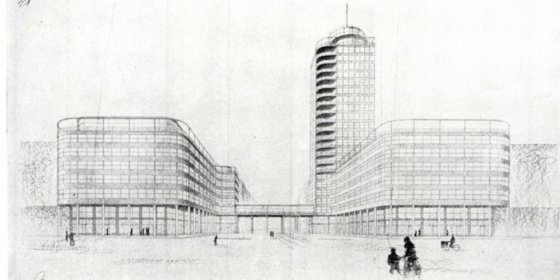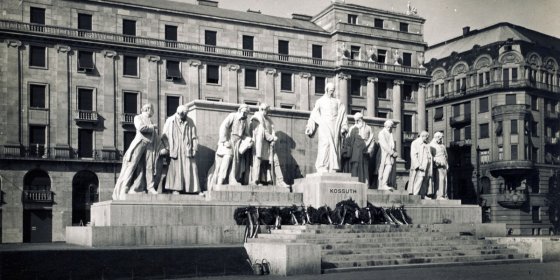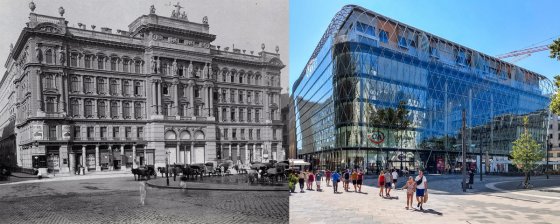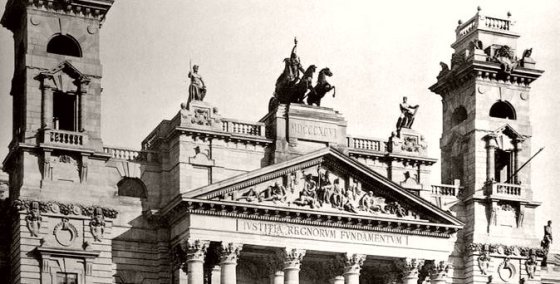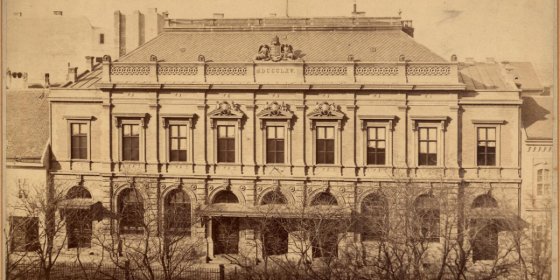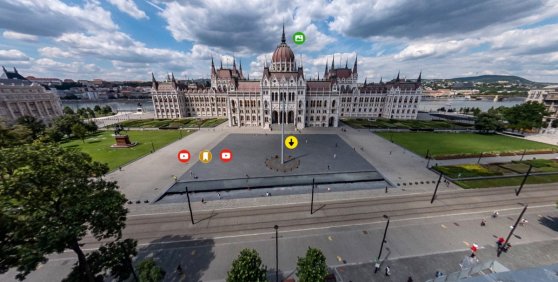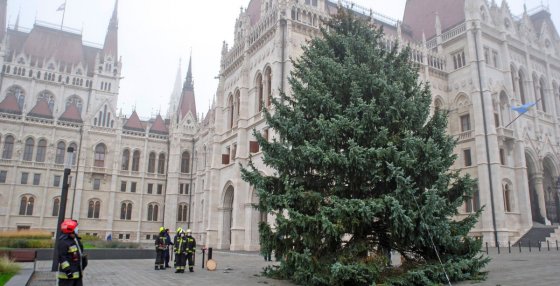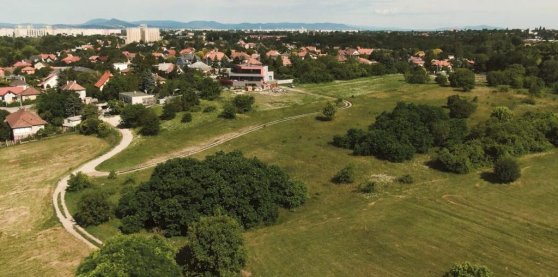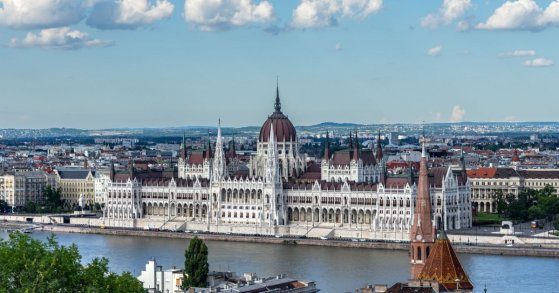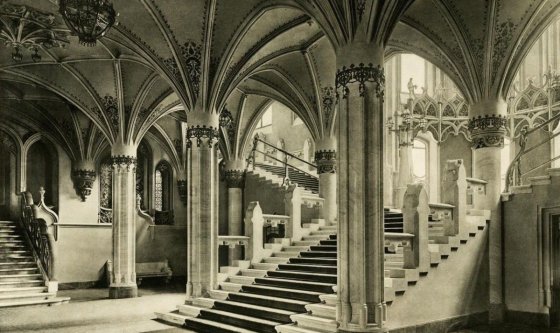 The „intertwined history” of the bridges and the city of Budapest
Which ideas and events have shaped the fate of bridges of Budapest and the cityscape? Alongside many other interesting facts, this question is also answered this newly published book by the Budapest City Archives, which introduces the history of bridges in Budapest.
The „intertwined history” of the bridges and the city of Budapest
Which ideas and events have shaped the fate of bridges of Budapest and the cityscape? Alongside many other interesting facts, this question is also answered this newly published book by the Budapest City Archives, which introduces the history of bridges in Budapest.
parliament
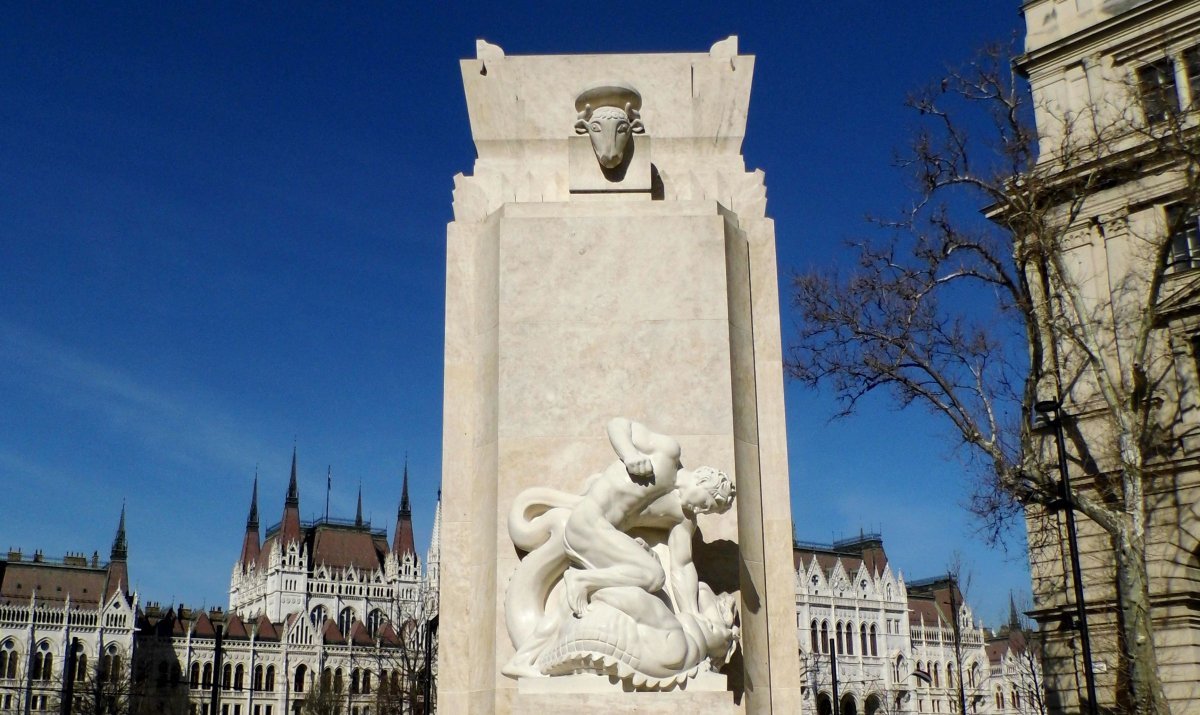 Stone coffin in front of the Parliament - The Monument of National Martyrs was unveiled 89 years ago
Stone coffin in front of the Parliament - The Monument of National Martyrs was unveiled 89 years ago
March 20, 2023 at 10:30 AM
Statues of many statesmen can be seen in front of the Parliament, which is why the Monument of National Martyrs, located next to Kossuth Square, on Vértanúk Square, receives relatively little attention. The dignified work even in its simplicity commemorates the victims of the proletarian power after World War I. After five years of preparation, it was unveiled on 18 March 1934, exactly eighty-nine years ago.
Tunnels instead of bridges? – An unrealised plan from the 19th century to connect Pest and Buda
March 11, 2023 at 2:30 PM
The plan to build road tunnels under the Danube instead of bridges was seriously considered in Budapest already 130 years ago. Proponents argued that tunnels were cheaper, more sustainable and less militarily vulnerable. This idea was on the agenda for years, but the tunnels were not built in the end.
The birthday of the National Anthem: the Ministry of Culture invites people to a joint recitation
January 16, 2023 at 12:30 PM
On the Day of Hungarian Culture, 22 January, on the 200th anniversary of the National Anthem, 200 children, 100 from the motherland and 100 from abroad, will recite Hungary's national poem on the main steps of the Parliament. At the same time, one of the most important Hungarian poems of all time will be recited in four locations across the border, as well as in Ferenc Kölcsey's former residence, Szatmárcseke, and in Veszprém, which has been awarded the title of European Capital of Culture.
The Holy Crown has returned home – Hungarian relics were taken off the American plane to the sounds of the Rákóczi March
January 6, 2023 at 10:00 AM
On 5 and 6 January 1978, Budapest and Hungary became the centre of attention in the international press. The reason for this was that it was then that the United States of America returned the Holy Crown to the Hungarian nation. The Holy Crown was solemnly received in Budapest.
The heating of the Parliament will only be modernised in the next cycle - The placement of the Holy Crown must be taken care of as well
November 15, 2022 at 2:30 PM
The House of Parliament was handed over in the fall of 1902, but the heating of the nearly 18,000-square-metre public building - which was one of the world's first district heating systems - has never been modernised. The assessment of outdated technical systems has already begun in Budapest's best-known monument, and the investment plan and cost estimate will be completed by 31 May 2023. After that, the government will decide whether planning for the internal reconstruction and modernisation of the building can begin, and then it will also be decided whether the National Assembly will have to move out during the renovation period.
The interior renovation of the Parliament has been postponed
November 4, 2022 at 1:00 PM
Although the external renovation of the 120-year-old Parliament has been completed, its energy, mechanical, security systems and electrical network must also be modernised. The government decision published in Wednesday's issue of Magyar Közlöny talks about examining the possibilities of the expected multi-year internal renovation. The government has decided that when it is financially possible, it will support the start of the internal reconstruction of the Parliament, which is outdated in many ways.
Imre Steindl, who died 120 years ago, could not see the handover of the Parliament
September 19, 2022 at 12:30 PM
Imre Steindl's name has merged with his main work, the Budapest Parliament. Thanks to one of the largest parliament buildings in the world, the master is included in the universal history of art, which can only be said of a few Hungarian architects. However, he had to work a lot to get to this point, fortunately, the main stages of his work can still be seen today, and they largely adorn the capital. Below, Pestbuda presents his lesser-known buildings in Budapest, thus remembering the architect on the 120th anniversary of his death.
Skyscraper plans in Budapest - High-rise buildings were planned for Károly Boulevard, Astoria and Rákóczi Road
January 9, 2022 at 11:00 AM
On Pestbuda, we recently introduced the Mol Tower under construction, which will be the first real high-rise building in Budapest. It will be no real skyscraper, because we call that buildings with a height of up to 150 meters, and the Mol Tower, albeit just by a little, remains below that limit. High-rise buildings have been designed in Budapest for almost 100 years, and several architects would have surpassed the 96-meter-high height of the Parliament and St. Stephen's Basilica.
The migration of the Kossuth statue in front of the Parliament - They wanted to erect the monumental memorial opposite the main entrance of the Parliament
August 22, 2021 at 11:00 AM
The square in front of the Parliament has been called Kossuth Square since 1927, since the statue of the great statesman was inaugurated that year. The designation of its exact location provoked lengthy debates, and the finished work was tentatively erected at several points of the square by the time it reached its final location.
Pestbuda recalls how much Budapest has changed in 100 years with 6 interesting pairs of pictures
July 30, 2021 at 9:00 AM
It is always exciting to follow the change, especially when it comes to Budapest. Old photos faithfully document what a house, street or square in the capital used to be like. With their help we can recall the former Haas Palace in Gizella Square, marvel at how - in the 1880s and 1890s - barren the Rózsadomb was, and today's Margit Boulevard were more like the streets of a small town. Factories stood on the banks of the Danube in Pest, next to the Parliament building under construction.
Missing inscription to return to the facade of Palace of Justice
April 30, 2021 at 2:00 PM
A Latin inscription once proclaimed the judicial role of the building that stands opposite the Parliament building on Kossuth Square. Until 1949 the Palace of Justice housed the Curia, Hungary's highest court of appeal. The inscription was removed in the 1950s. During the building's renovation and the relocation of the Curia, the original inscription will return after seventy years.
Members moved to the Former House of Representatives 155 years ago
April 15, 2021 at 10:30 AM
Two buildings in Pest were built for the national assembly. It is well-known that the vast Parliament Building on the Danube banks, completed in 1902, is one of the largest buildings in the world, houses the National Assembly. However, the Neo-Renaissance palace, the Former House of Representatives in Bródy Sándor Street, designed by Miklós Ybl, which elected members began using 155 years ago, is older than its grand sister.
A virtual visit to Budapest – Explore Kossuth Square online
March 1, 2021 at 2:00 PM
A new virtual tour of Kossuth Square around the Hungarian Parliament building has been released. The virtual space includes a collection of rarely seen films and less known facts to offer visitors a deeper understanding of the Hungarian nation's main square, its buildings and memorials.
Lower embankment to be renovated between Parliament and Margit Bridge
February 12, 2021 at 3:00 PM
The Budapest City council has begun the process of renovating the pest lower embankment between Margit Bridge and Kossuth Square. The public procurement tender published today on the EU website details that the work will be completed until 31 December 2021. The government will provide 787 million HUF in funding towards the project.
National Christmas tree erected on Kossuth Square
November 24, 2020 at 4:00 PM
The massive silver pine will decorate the square from the beginning of Advent to Epiphany.
The home of national diets, Királydomb, to be named national memorial site
November 12, 2020 at 2:00 PM
The government has submitted its proposal to name Királydomb (lit., 'hill of the king') in Rákosmező a national memorial site. Found in present-day Kőbánya along the Rákos Stream, the field once hosted national diets and the elections of Kings. The area is under threat of being built up.
Parliament or Palace? – Construction of the Hungarian parliament began 135 years ago
October 12, 2020 at 5:58 PM
On 12 October 1885 150 workers began to dig a 40,000-cubic-metre pit. With this construction of the Hungarian parliament building began based on plans drawn by Imre Steindl. Lasting nearly two-decades the project transformed a neglected, to-be-developed part of the city, Tömő tér, into one of the most symbolic places in the country.
The Gothic-Revival wonders of Budapest
August 6, 2020 at 9:00 AM
The image of Budapest today is defined by a prolific period, the architecture of dualism. The most famous buildings of the capital, such as the Fisherman's Bastion, the Opera House, the Parliament and Saint Stephen's Basilica, were built in the second half of the 19th century. This period is characterized by a high degree of stylistic pluralism. Join PestBuda on a walk through the most stunning buildings in Budapest.
More articles
 The „intertwined history” of the bridges and the city of Budapest
Which ideas and events have shaped the fate of bridges of Budapest and the cityscape? Alongside many other interesting facts, this question is also answered this newly published book by the Budapest City Archives, which introduces the history of bridges in Budapest.
The „intertwined history” of the bridges and the city of Budapest
Which ideas and events have shaped the fate of bridges of Budapest and the cityscape? Alongside many other interesting facts, this question is also answered this newly published book by the Budapest City Archives, which introduces the history of bridges in Budapest.
 The Bridge Report, which brought a turning point in the history of Budapest
A travel report that changed the history of Pest and Buda, as well as Hungary. The little book contributed to the change of half a thousand years of legal customs and the implementation of an investment of unprecedented size and technical quality. This book was The Bridge Report [Hídjelentés in Hungarian].
The Bridge Report, which brought a turning point in the history of Budapest
A travel report that changed the history of Pest and Buda, as well as Hungary. The little book contributed to the change of half a thousand years of legal customs and the implementation of an investment of unprecedented size and technical quality. This book was The Bridge Report [Hídjelentés in Hungarian].
 Drama on the university wall - The heroic monument was planned 95 years ago
In the constant hustle and bustle of the Egyetem Square in Pest, the students may not even notice the monument that decorates the short section of wall between the church and the central building of ELTE. However, it commemorates their predecessors, the heroes who fought for their country in World War I, and those who heroically helped them. The first design of the dramatically collapsing soldier was born in 1928, ninety-five years ago.
Drama on the university wall - The heroic monument was planned 95 years ago
In the constant hustle and bustle of the Egyetem Square in Pest, the students may not even notice the monument that decorates the short section of wall between the church and the central building of ELTE. However, it commemorates their predecessors, the heroes who fought for their country in World War I, and those who heroically helped them. The first design of the dramatically collapsing soldier was born in 1928, ninety-five years ago.

